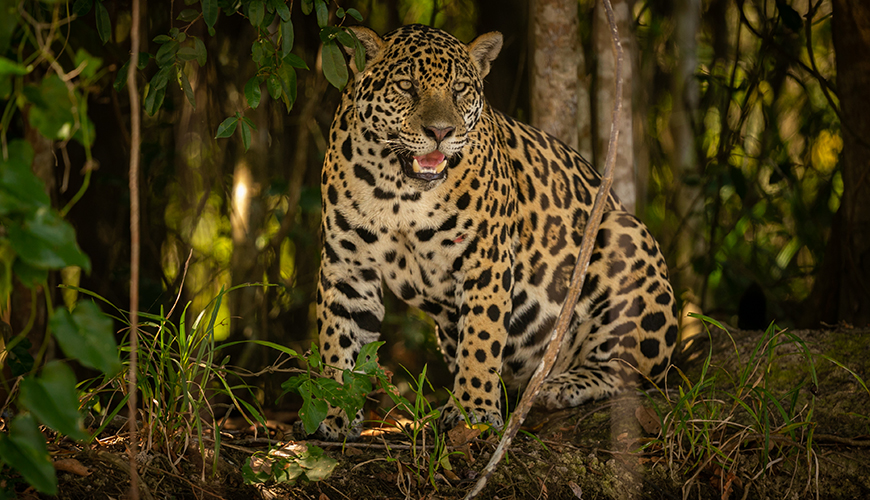The vast biodiversity of the Amazon is a determining factor in the global climate system, the carbon cycle – and therefore climate change – and hemispheric hydrological systems. We tell you what are the conditions that make this biome an exceptional source of life for the planet.
Read the complete Spanish edition of EL BOSQUE ES VIDA magazine here.
“Nature is not a resource to be exploited. It is not simply a geographical, scenic scenario, a kind of static and immobile scenery where human activity takes place. It is the system of life of which we are part and we need to re-enter into synchrony with it,” said the Minister of Environment Susana Muhammad, during the Biodiversity forum and COP16, on the need to transform the way we understand nature and relate to it.
The Amazon biome is the jewel in the crown in this matter thanks to the fact that it is home to more than 10% of the world’s biological diversity.
According to data from the Colombian Biodiversity Information System (SIB), in our country alone, the Amazon has 46,632 species, but it is estimated that the figure may rise to more than 320,000, because there is currently no total record of all the species that inhabit this important biome.
The scientist, teacher and expert in biodiversity, María Daniela Pulido, explains the characteristics of biological diversity in the Colombian Amazon and the geological, hydrographic and climatic conditions that make this an exceptionally biodiverse region.
What is the origin of the Amazon?
The formation of the Amazon basin began approximately 100 million years ago. It has its genesis when Pangaea, a supercontinent that existed in the late Paleozoic and early Mesozoic eras, began to fracture and divide.
Due to the movement of the terrestrial and oceanic tectonic plates, overlaps began to be created in the Earth’s crust, giving rise to mountain ranges. In this way, throughout different geological periods, the Andes mountain range, the Amazon plain (approximately 20 million years ago) and a transitional piedmont between the two regions were created.
Moreover, due to climate variability, the Earth has experienced periods of cooling and warming. Thanks to this natural dynamics of the planet, melting of ice occurred that gave rise to the Tethys Sea, which on two occasions flooded not only the Amazon biome but also a large part of the South American continent, thus beginning the formation of some basins such as the Amazon and the Orinoco.
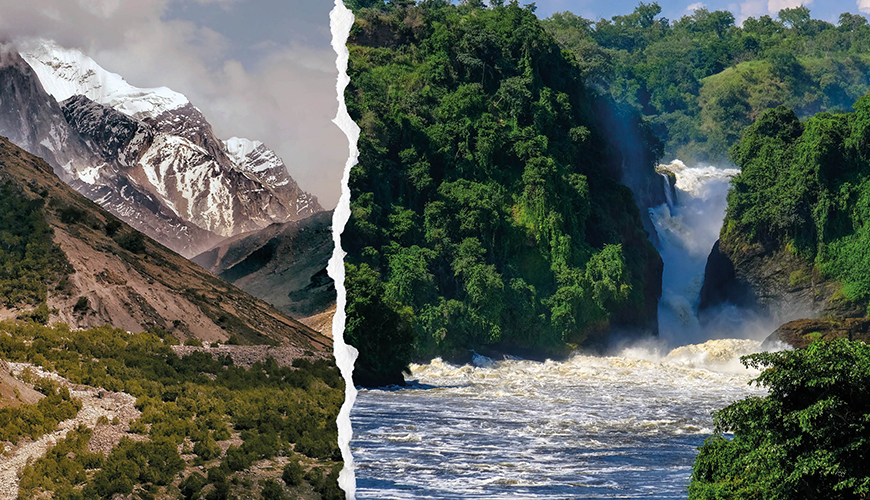
The Amazon is one of the most biodiverse regions in the world. Does its geological conformation have an impact on this richness in terms of biodiversity?
It is precisely this geological transformation that has given the Amazon unique characteristics. For example, it makes a direct relationship between the mountain ranges of the Andes and the Amazon plain, because much of the sedimentation comes from the upper basins of the Andean zone and is deposited in the lower basins, that is, in the Amazon.
On the other hand, the trade winds travel from the Atlantic Ocean carrying moisture and ocean components. When it collides with the Andes, this content is deposited in the Amazon through rainfall, generating the particular climatic conditions of the tropical rainforest, where there is a higher relative humidity that creates an environment similar to a giant greenhouse, which contributes to the proliferation of species.
This, added to the fact that we are located in the equatorial zone, where we do not have seasons and, therefore, there are no marked climatic differences in the same year, allows the same characteristics of precipitation, temperature and relative humidity to be preserved. This set of uniform variables together with soil conditions make up this interesting ecological, biological and climatic dynamics of the Amazon.
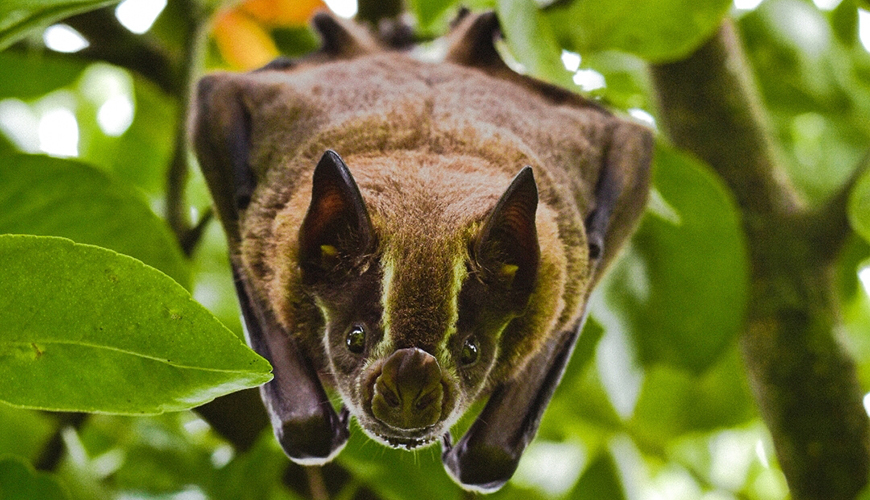
What are the main characteristics of biodiversity in the Amazon?
Ecological, plant-animal and trophic interactions are central in this region. They determine all aspects of the Amazon forests and are responsible for their composition, the regulation of species and the generation of biodiversity.
In a food chain it is very important that there is a balance between flora and fauna. In the Amazon, these two biotic components are directly related since the dispersal and pollination of Amazonian plants occurs mainly by animals. On the one hand, both mammals and birds consume the seeds and disperse them; on the other, insects contribute to pollination. In this way, they contribute to the survival of many species. According to the Scientific Panel for the Amazon, between 80 and 90% of trees depend on animals for seed dispersal and up to 98% of plants depend on animals for pollination.
On the other hand, the Amazon has the largest number of endemic species worldwide, as a result of the geographical barriers formed by water bodies.
What are geographical barriers and what is their relationship with biodiversity?
They are physical or ecological boundaries, such as mountain formations or rivers, that determine the distribution of species. Darwin’s theory of evolution mentions that there are processes of adaptability and transformation of species according to the types of ecosystems or the areas where they are found. Geographic barriers isolate small communities of organisms. By not allowing genetic exchange with other populations of organisms, it generates endemism.
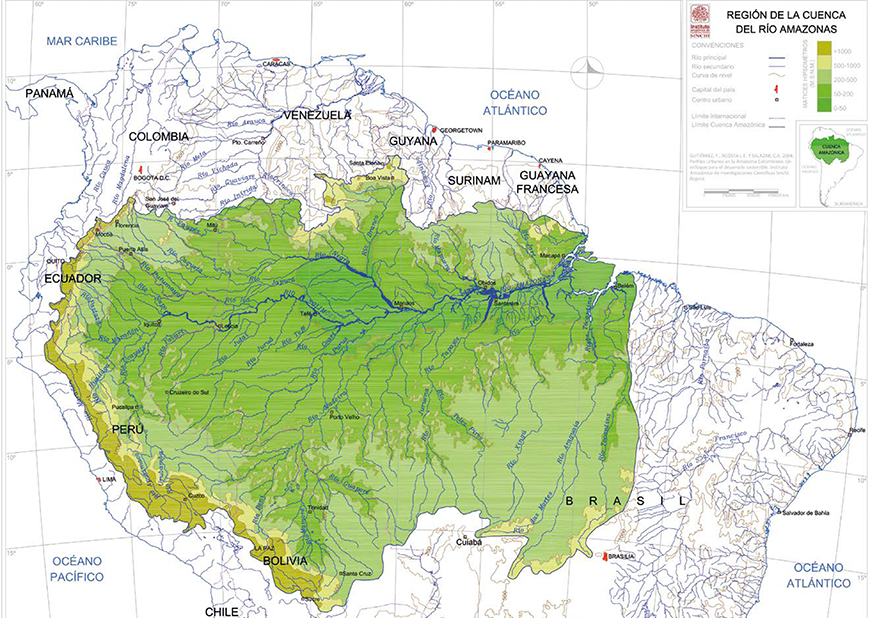
What is biodiversity? It is the variety of life that exists on Earth, in all its forms. It has different components, such as the diversity of species of fauna and flora, genetics – the variability of genes between organisms of the same species – and ecosystems; but it also encompasses the interrelationship between species and between different ecosystems, which can be terrestrial, aquatic or mixed, such as mangroves, which are a combination of fauna and flora of terrestrial and aquatic ecosystems.
Do the hydrological conditions of the region also influence the wide biological variety of the Amazon?
Of course. In this regard, the Andean zone has important natural functions. The main Amazonian rivers are born there, which with natural drainage carry sedimented material to the lower basins of the Orinoco and the Amazon. In other words, the sand that moves underwater carries nutrients and microorganisms that have already died and enriches the soil, contributing to the conservation and proliferation of vegetation, macrofauna and microfauna.
It is important to note that the water conditions of the Amazon do not only refer to the flow of watersheds, but also to what we call ‘flying rivers’. These also play a very important role in the displacement of nutrients and are part of the vital process of fauna, because having a greater number of water bodies there is less competition for water consumption between organisms.
Historically, the Amazon has been threatened by deforestation, what is the impact of forest loss on biodiversity?
Deforestation affects the increase in temperature in microclimates. This modification of the dynamics of the climatic variables of ecosystems affects the balance of species susceptible to climate change, such as amphibians, and can even lead to the extinction of species, altering the functioning of the ecosystems themselves.
Massive deforestation not only drives biodiversity loss, but also impacts the hydrological cycle. For example, trees and vegetation function as a protective barrier between the atmosphere and the soil. When it ceases to exist, the rain falls directly to the ground, causing the washing of its nutrients – which are the stimulators of vegetation growth – and draining into the water bodies. This generates an adverse impact not only on ecosystems, but on the biome, in general.
On the other hand, deforestation reduces the habitat of different species, affecting them negatively. An example is what happens with the Amazonian tapirus (tapirus terrestris), an endemic species that is in danger of extinction due to high deforestation, among other causes. This animal requires large areas of territory to walk. As the area of their habitat decreases due to forest loss, their species is affected.
Likewise, forest loss affects ecological interactions – which help the dispersal, proliferation and balance of an ecosystem – because by reducing the area of the forest, the great diversity of organisms that inhabit it must move and group elsewhere.
How do these forced movements affect ecosystems and different species?
It can lead to overpopulation of some species, competition for predation role, or threatened most vulnerable species, such as those that do not reproduce easily.
Linked to this is the issue of genetic plasticity, that is, the ability of a species to adapt to the new abiotic conditions of a system by changing its genetics. The Amazon toucan, for example, has the ability to sing at a high volume, which allows it to be heard within its population. This species uses song to look for mates, reproduce or feed. However, this toucan that ‘screams’ in the Amazon, when displaced to the Andean region will create a sound disturbance of the forest with its song, generating an imbalance within that ecosystem. If the opposite were to happen and a species of páramo bird, which produces soft songs, descended to the altitude of the Amazon, where all species sing the loudest, its reproductive behaviors would be affected because the other individual would not be able to hear it and, therefore, they will not meet or communicate. Genetic plasticity would allow, for example, that in about 50 or 100 years this species of toucan decreases the volume of its song, adapts to the Andean area and stands up to a new species. However, if the species fails to adapt, it tends to become extinct.
It is said that humanity depends on other forms of life, how does this relationship occur?
Having a properly regulated ecosystem ensures the provision of food for local communities and most medicines, such as antibiotics, depend on flora and fauna.
We also depend on nature for the purification of water and air resources. If we talk about a climate imbalance, there is also an imbalance in biodiversity and the regulation of microclimates and macroclimates. The moors, for example, receive rainfall, which accumulates and drains purified by runoff and river sources. This natural interruption of biological and ecological dynamics affects the purification of water and air.
In addition, forests play a fundamental role in the sequestration of carbon dioxide from the atmosphere, contributing to reducing the greenhouse effect and, therefore, global warming.
How does the protection of Amazonian tropical forests contribute to the conservation of their biodiversity?
Human beings affect nature just by breathing. We must reach a coexistence between nature and the effects of human activities. Advancing conservation processes of forests and various ecosystems will reduce this impact and regulate the ecological system. By decreasing the pressure on biodiversity, there will be climate regulation and global warming will decrease. Eco-coexistence is essential, because we all have the right to a place on Earth.
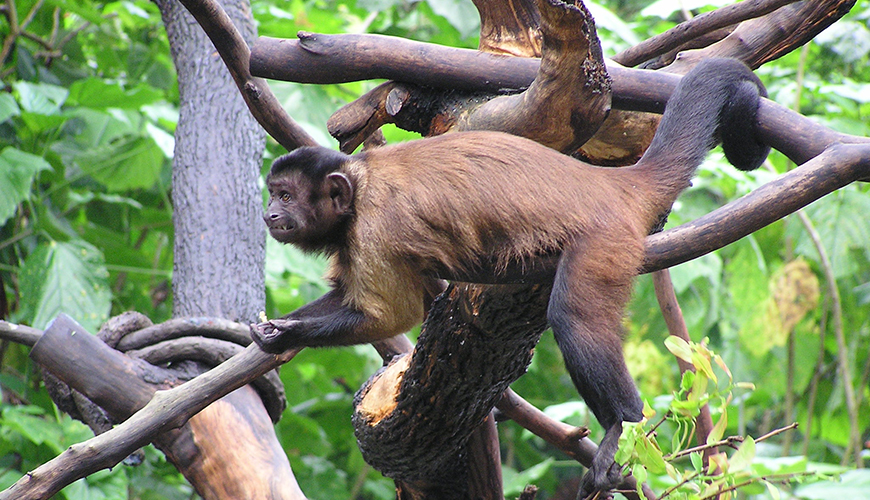
Inventory of species in the Colombian Amazon
- According to the Information System on Biodiversity in Colombia (SIB), the Amazon region has 46,632 species (58% of the total species in the country).
- 841 of them endemic. However, it is estimated that the figure may amount to 320,674 species.
- The Amazon is home to 58% of the country’s species. It has 16,749 species of animals: 9,542 vertebrates and 13,371 invertebrates. Of the first group it has 761 species of mammals, 4,659 of birds, 740 of reptiles, 643 of amphibians and 2,736 of fish. From the second group, 367 species of arachnids, 71 of crustaceans and 147 of molluscs. It also has 1,233 species of fungi and 492 species of bacteria.
- As for the flora, the six Amazonian departments are home to 29,142 species of plants: 26,425 angiosperms, 58 gymnosperms, 1595 ferns, 572 mosses and 272 liverworts. It also has 397 species of lichens, 1,167 of orchids, 268 of magnolias, 471 of palms, 843 of bromeliads, labiadas and passionflowers, and 36 of timber.
- However, this great richness of species is threatened. In total, 393 are at risk: 30 critically endangered, 116 in danger and 228 in vulnerable status.
- Some of the most representative threatened species are: Armadillo (Cabassous unicinctus) (LC), black devil monkey (Callimico goeldii) (VU), pocket monkey (Cebuella pygmaea) (VU), pink dolphin (Inia geoffrensis) (EN), margay (Leopardus tigrinus) (VU), palm bear (Myrmecophaga tridactyla) (VU), jaguar (Panthera onca) (near threatened), giant armadillo (Priodontes maximus) (VU), tapir (Tapirus terrestris) (VU), red fig crow (Pyroderus scutatus) (VU), the Orinoco goose (Oressochen jubatus) (VU), the white-lipped peccary (Tayassu pecari) (Vu), the Caquetá bonito monkey (Plecturocebus caquetensis) (CR), the wolf guagua (Dinomys branickii) (VU), the spider monkey (Ateles belzebuth) (EN), the mahogany (Swietenia macrophylla) (CR), the oak or carob tree (Quercus humboldtii) (VU), the black cedar or walnut (Juglans neootropica) (EN), the abarco (Cariniana pyriformis) (CR), the Amazon manatee (Trichechus inunguis) (VU) (EN), the Mesoclemmys dahli, a species of turtle (CR).
María Daniela Pulido
Environmental engineer from the University Corporation of Huila, specialized in Geographic Information Systems and master’s degree in engineering and environmental management.
His work has focused on the areas of environmental and geological engineering, zoology, ornithology, behavioral biological sciences, ecology and biodiversity conservation.
He is currently a professor at the Uninavarra University Foundation, where he leads the Navarra Engineering research group. He has developed research on geographic information systems, conservation biology and ecology, management and conservation of avifauna, large high mountain mammals, vertebrate fauna in general and ecosystem conservation, among other topics.

